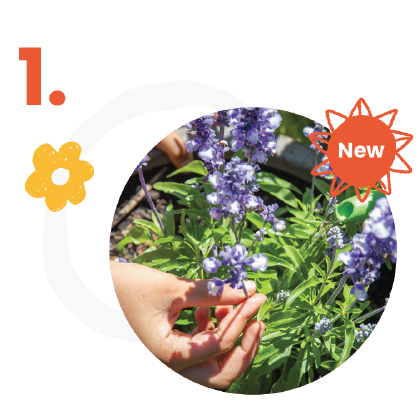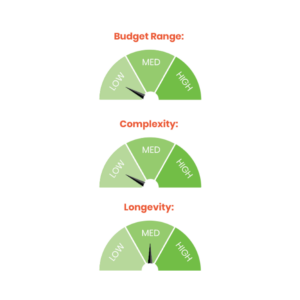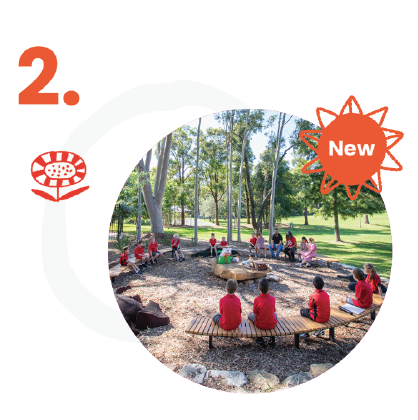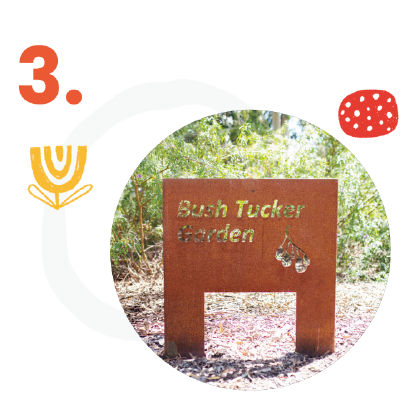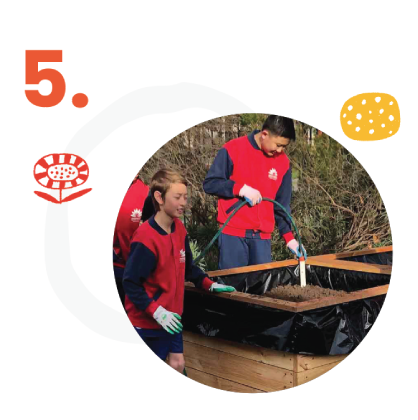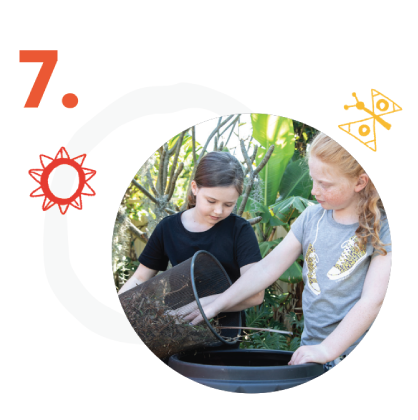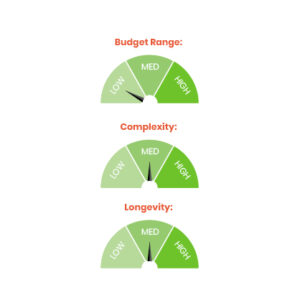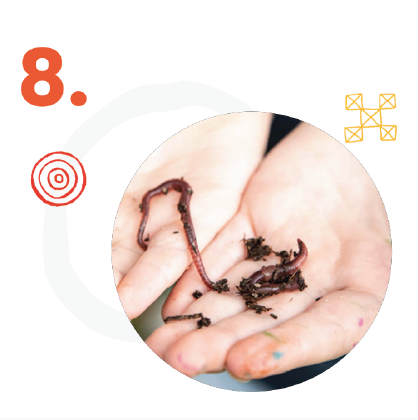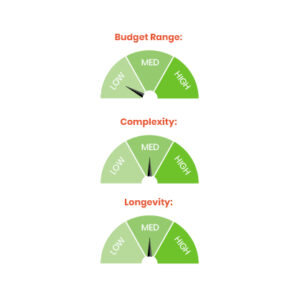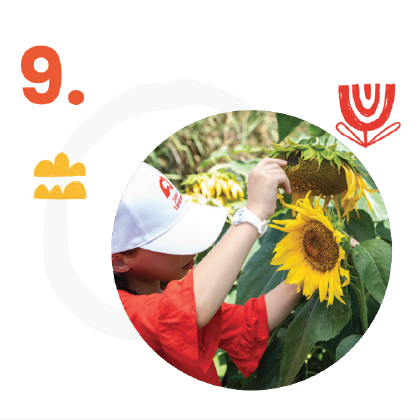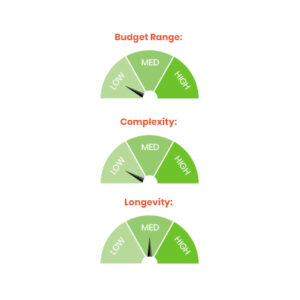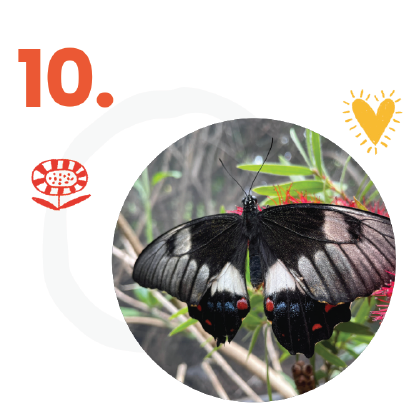
Undertaking a Junior Landcare Project is a great way to engage young learners in environmental education
Here at Junior Landcare we often get asked for project ideas for Woolworths Junior Landcare Grants. People want to know how to get started helping children get hands-on with the natural environment.
Some things to consider when deciding on a project include your location, local environment, project site, climate and maintenance.
To get your creative juices flowing, we have created a list of Top 10 Woolworths Junior Landcare Grant Project Ideas to help you get started with your school or early learning centre.
We have rated each project according to three criteria: Budget range, complexity and the longevity of the project. We have also included links to relevant resources and activity sheets in the Junior Landcare Learning Centre for each project.
If you would like to engage with others in your local community before kicking off, we encourage you to:
-
- Get in touch with your local landcare or other community environmental group. They could help you to identify trees and plants native to your area, advise on a suitable project type and how they might be able support you.
- Contact your local Traditional Owners or First Nations organisations and involve them in your project. It is important to include a First Nations perspective so that children understand local cultural heritage, including local fauna and flora. If you do not have any existing contacts or direct links with First Nations organisations or people in your area, a good starting point is to contact either the Local Aboriginal Land Council (LALC) or Local Aboriginal Education Consultative Group (AECG).
This resource isn’t an exhaustive list of project ideas. Visit the Junior Landcare Learning Centre and Educator Hub – proudly supported by Woolworths – for other project activities or ideas to enhance your existing projects.
For a downloadable copy of the Top 10 Woolworths Junior Landcare Grant Project Ideas, click on the button below.
Creating a Sensory Garden
|
|
Sensory gardens are a fantastic way for children to engage the senses and connect with nature. The elements of a sensory garden can help create an emotional response in visitors, making them feel calmer, happier and more in the moment. Through a sensory garden, children can learn about plant life, experience the changing seasons, and develop a sense of responsibility by participating in garden care. Overall, a sensory garden for kids serves as a dynamic and educational haven where nature’s wonders come to life through a symphony of sensory experiences. You don’t need a huge area to plant a sensory garden. Our learning activity will give you some ideas about selecting plants to spark the senses. You can also hang wind chimes, brightly coloured sculptures and artworks to accompany the nature-based elements of the garden. Check out the creating a sensory garden learning activity on the Junior Landcare Learning Centre to help you plan your project with step-by-step instructions and curriculum links. Case Study Darraweit Guim Primary School in Victoria’s Macedon Ranges worked together with Upper Deep Creek Landcare Network to replant after floods devastated the school garden, resulting in a sensory garden with smells, textures, bright colours and a beautiful curving path decorated with mosaic tiles. Read more here about how the school recovered and reconnected after the floods. |
Creating a Yarning Circle
|
|
Establishing a yarning circle in your school or early learning centre is a powerful way to embrace First Nations cultural practices. The yarning circle, rooted in Aboriginal and Torres Strait Islander traditions, is a circular seating arrangement fostering open dialogue, respect, and a sense of community. Placed in a natural setting, it also symbolises and supports connection to the land. Integrating a yarning circle in the school environment provides a space for meaningful conversations, storytelling, and cultural exchange. It encourages students to share experiences, learn from one another, and develop empathy. This inclusive setting promotes a sense of belonging for First Nations and non-First Nations students alike, fostering understanding and appreciation for diverse perspectives. Check out our series of Yarning Circle activities in the First Nations Perspectives section of the Junior Landcare Learning Centre, accompanied by videos, step-by-step guides and activity sheets. The background activity is a great place to start. Case Study: Middle Dural Public School in New South Wales has constructed a Yarning Circle to create a harmonious setting for students, encouraging respectful interactions within a natural bush environment. Read here on how the school used their Woolworths Junior Landcare Grant to support the Indigenous planting, bush tucker plants, and soil surrounding the Yarning Circle. |
Creating an Indigenous Plant Use Garden
|
|
This project is one of our favourites! It is constrained only by your imagination, budget and time. An indigenous garden project is a great way for young learners to make links to Traditional Owners and First Nations people in your area. Working together you can find out more about the cultural history of your area by discovering more about bush tucker, the plants and animals local to the area, and other uses of plants, trees and grasses found in the bush. Indigenous plants are suited to your local conditions and generally require less maintenance and water than other species. Explore our ‘Creating an Indigenous plant-use garden: vision’ activity for exciting ideas and step-by-step instructions to help you create successful indigenous plant-use garden projects. Case Study: Revesby Public School in south-west Sydney set out to create a bush tucker garden to enhance the school’s native habitat and provide a learning space for students. Read how their Indigenous plant use garden has become a highlight of the school here. Tip: To further enhance your project, visit the series of curriculum-linked First Nations perspectives learning activities on the Junior Landcare Learning Centre here, which include exploring First Nations weather knowledge and First Nations peoples’ languages map. |
Creating a Food Garden
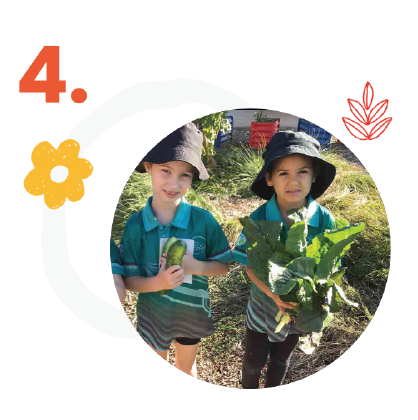 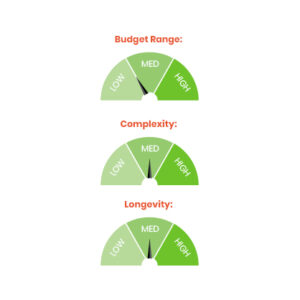 |
What better feeling is there than enjoying home-grown produce? Creating a food garden is a great way to make connections about where the food we eat comes from. The size of your food garden is really only constrained by your access to space, budget and ability to tend to the planting. Your project could aim to supply a regular kitchen garden activity or simply provide herbs to enhance a meal. A food or kitchen garden project does often require the input of a central person who can monitor plant health, keep on top of the weeds and ensure watering occurs, especially during holiday times. The Junior Landcare Learning Centre also has a range of different activities that complement a food garden project, from learning about plant life cycles to understanding where our food comes from to propagating from plant and veggie scraps. Visit the ‘Creating a food garden’ series of learning activities to understand more about successful food garden projects, to help you create goals for your project and for other activities for a flourishing food garden. Case Study: Educators at Zuccoli Preschool in Palmerston, NT, wanted to promote sustainable practices in the preschool and provide the children with knowledge they could share at home about gardening and healthy food choices. Read about the success of their project here. |
Making a Wicking Bed
|
|
Wicking beds are garden beds that hold a reservoir of water underground. Plants access the water as it is drawn up (wicks) through the soil. Wicking beds are a great addition to a food garden project and can be installed at the same time you implement your food garden. While wicking beds are more technical than a standard garden bed to install, your plants will require less watering, will use less water and will be more productive. They also upcycle materials and are a great way of building awareness of waste and reuse, as well as scientific and mathematical ideas, such as volume, evaporation, transpiration, capillary action and plant life cycles. Depending on the space and budget available to you, follow the instructions and activity sheets for ‘Making a small wicking bed’ or ‘Making a large wicking bed’ in the Junior Landcare Learning Centre, with videos to support you every step of the way. Case Study: Thanks to their Woolworths Junior Landcare Grant, Kingswood Primary School in Dingley Village, a Melbourne suburb, created four new wicking beds and planted them with vegetables that flourished. Read more about their water-wise project here. |
Creating a Wildlife Habitat
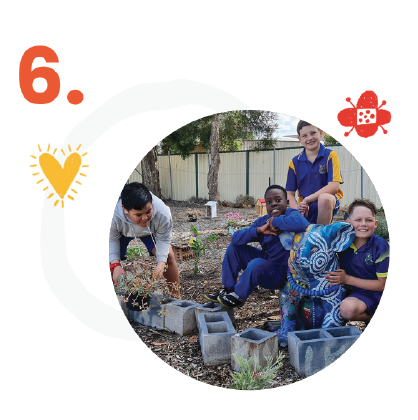 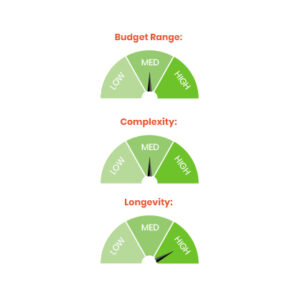 |
Wildlife can struggle to find homes, especially in our urban areas, which is why a habitat project can be so valuable. Finding out about what types of animals live in your area and what type of habitat they need is a great first step and we recommend getting in touch with your local Landcare or environment group for advice. It is important to make sure this project is part of a long-term plan for your school or organisation so that as the habitat grows and attracts wildlife, the project is maintained for the animals now calling it home. Another important consideration is that it may be many years before the plants are mature enough for wildlife to utilise them. Installing habitat is a great way for Junior Landcarers to learn about and appreciate their local wildlife, from the smallest insects and spiders to birds, reptiles, mammals and frogs. Explore our ‘Creating a Wildlife Habitat’ Research, Vision, Design and Planting learning activities for step-by-step instructions, activity sheets, checklists and more to help you every step of the way. Case Study: When Oxley Park Public School in Sydney’s west installed seven new demountable classrooms, several established garden areas were lost, including a number of mature trees previously inhabited by owls, magpies and other local wildlife. Thanks to the school’s Enviro Committee, read how the school used their Woolworths Junior Landcare Grant to re-establish green habitat to attract bees and bird life. |
Creating Compost
|
|
Compost is a great way to manage waste on your own grounds and helps learners see first-hand what happens to waste. PLUS it comes with the added benefit of reducing the amount of landfill and providing you with soil full of good nutrients that can be used on your food gardens or beds. It’s helpful to have a member of staff or community member who is responsible for managing and maintaining the compost, to ensure that it is breaking down properly and not creating a hazard or attracting flies and vermin. A top tip is two have two or more composters where possible so one can be left alone to break down, whilst the other can keep being topped up with scraps. This activity is also a great way to involve the entire school community – students, teachers, families – by encouraging them to provide scraps for the compost. Visit the Junior Landcare Learning Centre for a composting recipe that uses a simple method of composting and has been designed with the needs of the educators in mind. Case Study: Bonython Primary School, ACT, diverted 50% of their waste from landfill into composting and recycling – helped by their Woolworths Junior Landcare Grant. Read more about their successful composting system here. |
Creating a Wiggly Worm Farm
|
|
Using worms to help break down organic waste is a highly engaging activity for children. Not only are worm farms a great way to manage waste in your own grounds, they help young learners to value the role of all living things – even the crawly and slimy ones! Keep in mind though that worms need care and attention. Worm farms cannot be a set-and-forget project, so having a member of staff or local community member involved in managing your worm farm is an important consideration. Check out the ‘Creating a Worm Farm’ learning activity for more information and exciting ideas to get students involved in every phase of the project, as well as for essential safety tips for when you set up a worm farm. Case Study: Walkamin State School located in Queensland’s Tablelands Region wanted to add a worm farm to extend their sustainable waste management system. Read how the project proved to be an excellent vehicle for teaching students how to recycle food |
Creating a Beneficial Garden
|
|
A beneficial garden is one that attracts predators to help control pests that eat your food crops. Beneficial gardens generally involve planting flowers in and around the food crops and it is these flowers that attract predators such as hoverflies and ladybugs. Adding flowering plants to an existing veggie garden is quite an easy undertaking and beneficial gardening activities can be conducted alongside other food gardening activities. An ideal project to increase biodiversity, make your garden beds look more attractive AND entice more pollinators and predators to help increase your food crop, visit the ‘Creating a beneficial garden’ learning activity on the Junior Landcare Learning Centre to get started. Case Study: Community Kids Kadina Pollinator’s Paradise garden project is all about using flora native to the area. Read how the project was devised to help children see these remarkable creatures in action as they help with the pollination of the early learning facility’s plants and community vegetable garden here. |
Creating a Butterfly Garden
|
|
Bringing learners together to plant a butterfly-attracting garden is a fulfilling project. Some schools have used butterfly gardening activities to fulfil both the biological sciences as well as the wellbeing curriculum. Creating a butterfly garden will increase biodiversity by attracting butterflies; it will also attract other creatures, which will use the plants that you use. Learners will feel fulfilled when they notice the butterflies using the plants they have researched and planted. Butterflies rely on nectar from flowers; they are relatively easy to provide for and will readily seek out nectar producing flowers. Butterflies also need host plants for their caterpillars. A host plant is the specific type of plant that a butterfly relies upon for its larvae to eat. Your local butterflies will reward you for planting their host plant with a crop of hungry caterpillars that will grow, pupate and emerge, continuing the butterfly life cycle. For tips, ideas and activity sheets to help you set up a butterfly garden, visit the Junior Landcare Case Study: Designed and maintained by 200 children, the native butterfly garden at Guardian Childcare and Education St Clair in South Australia has become a space where children can learn more about plants, butterflies and what they need to survive. Read about their Bringing Back the Butterflies program here. |
For even more inspiration and ideas, explore our interactive map for brief descriptions and photographs of past Woolworths Junior Landcare Grant recipient projects.
